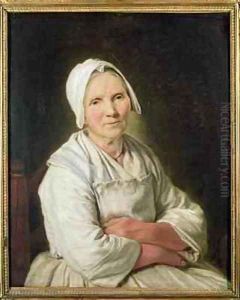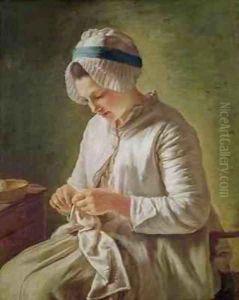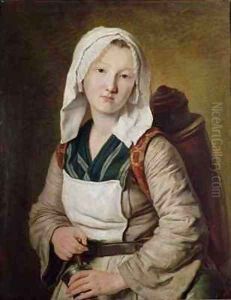Francoise Duparc Paintings
Françoise Duparc was a French painter born in Murcia, Spain, in 1726, to a French family. Despite being born in Spain, her artistic career and life are primarily associated with France, particularly the city of Marseille. Not much is known about her early life and training, but Duparc is recognized for her significant contribution to French painting in the 18th century, particularly for her genre paintings and portraits which often depicted scenes of everyday life with a sensitive and empathetic portrayal of her subjects.
Duparc's work is characterized by its realism and the emotional depth she brought to the scenes she depicted. Unlike many of her contemporaries who favored grand historical and mythological scenes, Duparc was drawn to the simplicity and honesty found in the lives of ordinary people. Her subjects ranged from domestic interior scenes to expressive portraits, often highlighting the plight of the poor and the working class. This focus on realism and the common person was part of a broader shift in the art world during the Enlightenment, reflecting changing ideas about society and the role of art.
Despite the fact that women artists often struggled to gain recognition in the male-dominated art world of the 18th century, Duparc achieved a degree of success and acclaim in her lifetime. She became a member of the Académie de Saint-Luc, which was a guild for painters and sculptors in Paris that provided an alternative to the more prestigious Académie Royale de Peinture et de Sculpture. Membership in the Académie de Saint-Luc allowed her to exhibit her work and gain a reputation as a skilled painter.
Unfortunately, much of Duparc's work has been lost or remains unattribated, which has made it difficult for art historians to fully assess her oeuvre and contribution to the art world. Nevertheless, the surviving works attest to her talent and unique perspective within the context of 18th-century French art.
Françoise Duparc died in Marseille in 1778. Although her work was somewhat forgotten after her death, there has been a resurgence of interest in recent years, with art historians and critics working to re-evaluate her contribution to the arts and to ensure that her legacy is not overlooked. Her paintings that do survive are held in various museum collections, where they continue to be appreciated for their warmth, humanity, and the distinctive voice of a talented woman artist in the pre-Revolutionary era.


